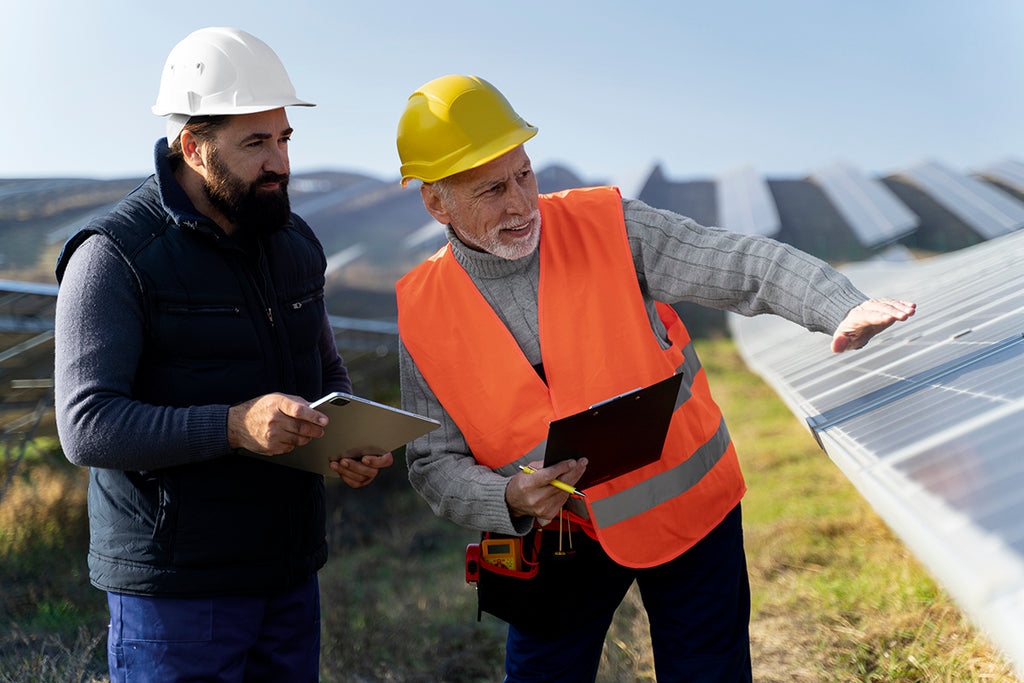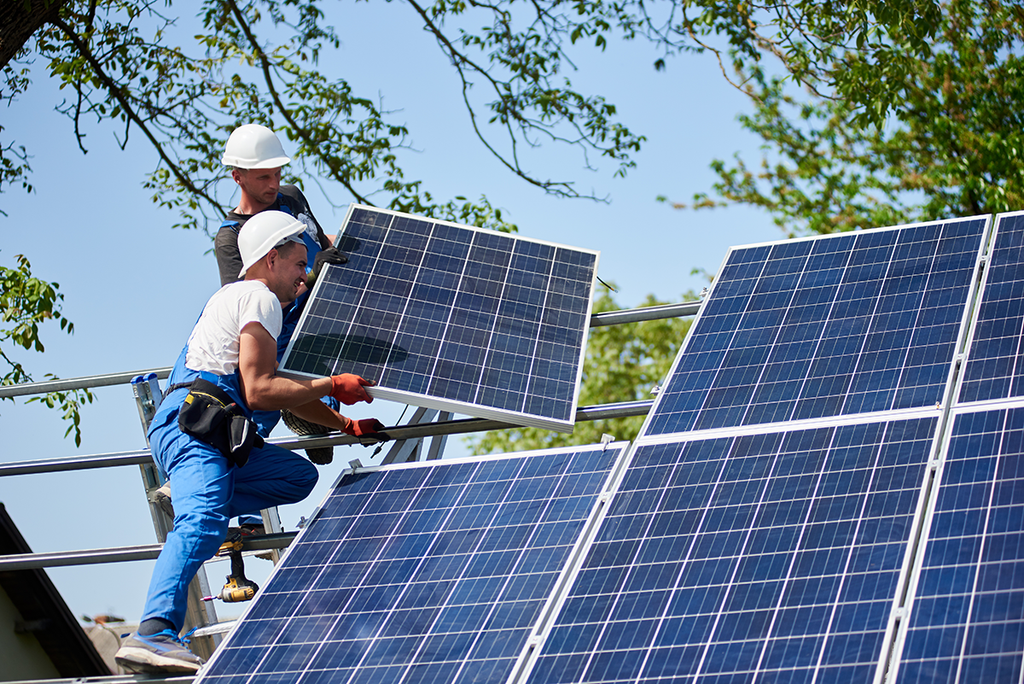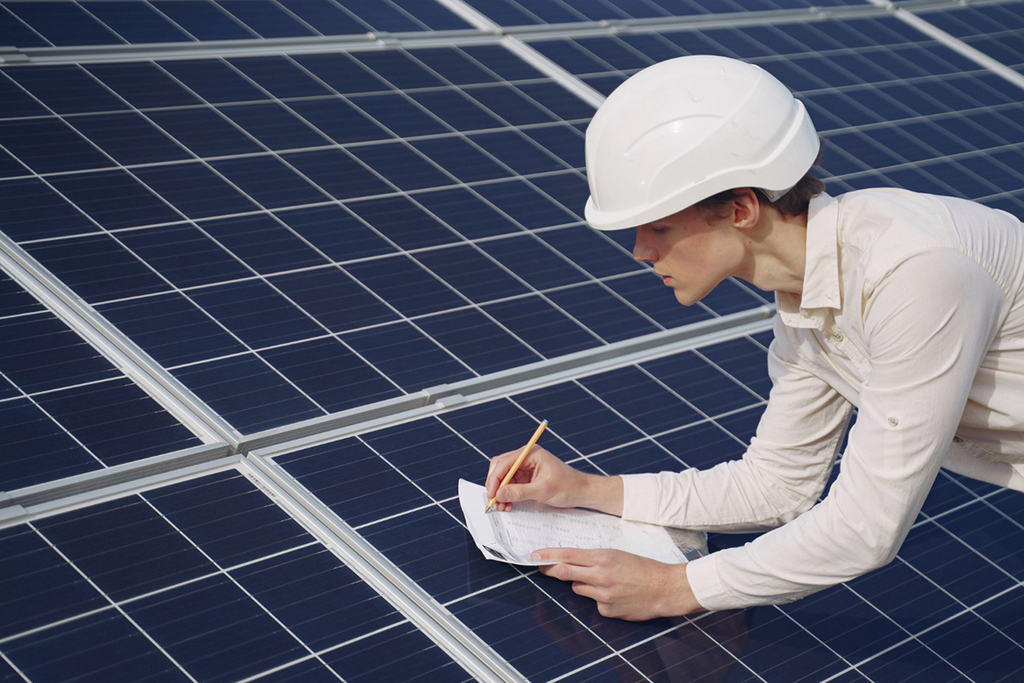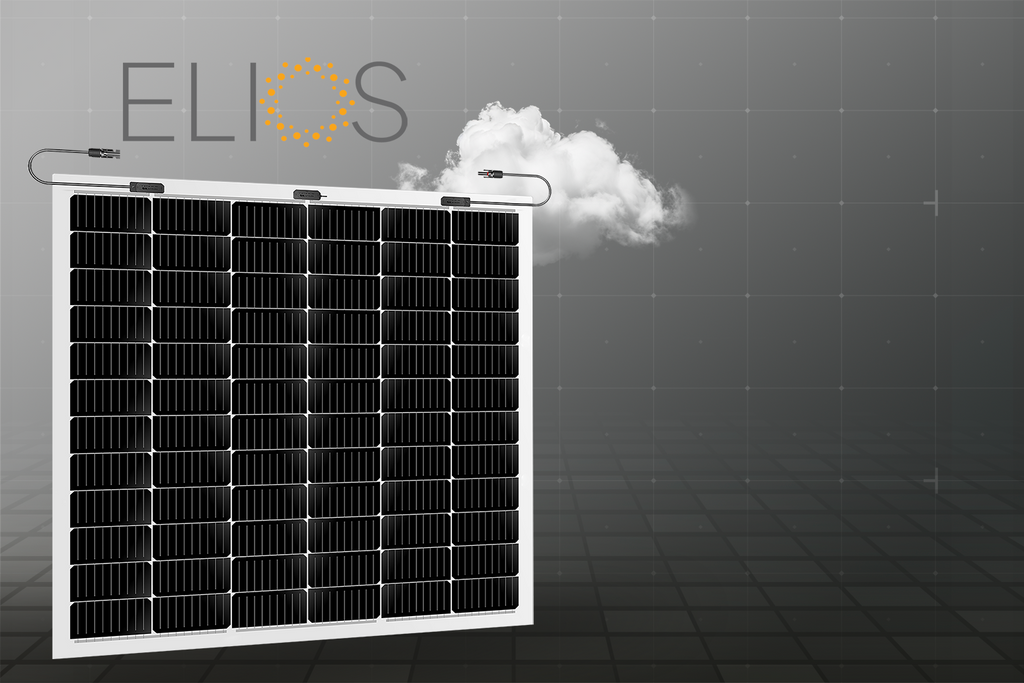Bifacial vs Flexible Solar Panels
Posted by Tina Kassaeian on

As solar technology continues to evolve, an array of panel types has emerged, each with its own set of advantages and applications. In this comprehensive guide, we'll explore different types of solar panels, with a specific focus on two popular variants: bifacial and flexible/semi-flexible panels.
Different Types Solar Panels Explained
Monocrystalline Solar Panels
These panels are crafted from high-purity silicon ingots, resulting in a uniform crystal structure that enhances efficiency and longevity. Monocrystalline panels are recognized for their high energy conversion efficiency and sleek black appearance, making them a popular choice for residential and commercial installations.
Polycrystalline Solar Panels
Polycrystalline panels are manufactured using silicon fragments melted together, resulting in a less uniform crystal structure compared to monocrystalline counterparts. While polycrystalline panels typically offer lower efficiency levels, they are cost-effective and suitable for large-scale utility projects.

Bifacial Solar Panels
Bifacial panels represent a specialized category designed to capture sunlight from both the front and rear sides, maximizing energy production. These panels typically feature a transparent backing material that allows light to pass through, enhancing rear-side absorption.
Bifacial panels offer increased energy yield and versatility in installation, making them suitable for various applications, including ground-mounted arrays and building-integrated installations.
Flexible/Semi-Flexible Solar Panels
Flexible panels, also known as thin-film flexible or semi-flexible panels, are engineered to be pliable, allowing for curved or irregular installations. These panels utilize thin-film photovoltaic materials deposited onto flexible substrates such as polymer films.
Flexible panels offer adaptability and lightweight design advantages, making them suitable for applications where rigid panels are impractical, such as on boats, vehicles, or portable chargers.
In this blog post, we will delve deeper into the dynamics of bifacial and flexible/semi-flexible solar panels, comparing their features, advantages, and limitations to provide readers with a comprehensive understanding of these innovative technologies and their potential applications in the renewable energy landscape.

All You Need To Know About Bifacial Solar Panels
As we briefly discussed earlier, Bifacial solar panels are engineered to capture sunlight not only from the front but also from the rear side, thereby maximizing energy absorption. These panels typically feature a translucent backing material that allows light to pass through, reflecting off surfaces such as the ground or nearby structures. This reflected light is then absorbed by the rear side of the solar cells, generating additional electricity.
Advantages of Bifacial Panels
Increased Energy Yield
One of the most significant advantages of bifacial panels is their ability to capture sunlight from both the front and rear sides, resulting in higher energy yields. Traditional monofacial panels only utilize sunlight from the front side, whereas bifacial panels can take advantage of reflected and diffused light from surrounding surfaces.
This enhanced light absorption allows bifacial panels to generate more electricity for a given area, making them exceptionally efficient in locations with high albedo surfaces, such as snow-covered ground or light-colored rooftops.
Versatility in Installation
Bifacial panels offer unparalleled flexibility in installation options, making them suitable for a wide range of applications. Whether installed on the ground in large-scale solar farms, integrated into building facades, or incorporated into carports and awnings, bifacial panels can adapt to diverse environments and configurations.
Their versatility extends to both stationary and tracking systems, allowing for optimal positioning to maximize energy production throughout the day. This versatility opens up opportunities for innovative solar installations in urban environments, agricultural settings, and remote off-grid locations.

Enhanced Durability
Bifacial panels boast a robust and durable design, characterized by their simplicity and lack of moving parts. Unlike some other solar technologies that may be prone to mechanical failures or degradation over time, bifacial panels offer long-term reliability in diverse environmental conditions.
With no inherent vulnerability to wind stress, temperature fluctuations, or mechanical wear, bifacial panels are well-suited for deployment in harsh climates and remote locations where maintenance may be challenging.
Additionally, the absence of fragile glass backsheets found in traditional monofacial panels reduces the risk of breakage during transportation, handling, and installation, further enhancing their durability and resilience.
Shading Tolerance
Bifacial panels exhibit superior shading tolerance compared to traditional monofacial panels. The ability to generate electricity from both sides allows bifacial panels to mitigate the impact of partial shading, such as from nearby trees, buildings, or obstructions.
While shading on the front side of a monofacial panel can significantly reduce its energy output, bifacial panels can continue to produce power from the unshaded rear side, maintaining overall system performance. This shading tolerance enhances the reliability and efficiency of bifacial panel installations, particularly in environments prone to shading or where space constraints necessitate closer panel spacing.
As a result, bifacial panels offer greater flexibility in site selection and design, maximizing energy production potential and optimizing return on investment for solar projects.
Furthermore, the modular design of bifacial panels allows for scalability and easy integration into existing solar infrastructure, facilitating incremental expansion or retrofitting of solar projects.
This scalability, combined with their high energy yield and durability, makes bifacial panels an attractive investment for developers, utilities, and end-users seeking reliable and efficient solar solutions.
As the demand for clean and sustainable energy continues to grow, bifacial panels stand out as a versatile and cost-effective option for harnessing solar power in diverse applications and environments.

Limitations of Bifacial Panels
Cost
Bifacial panels tend to be more expensive upfront compared to monofacial counterparts due to their specialized design and construction.
Installation Complexity
Achieving optimal performance from bifacial panels may require careful planning and installation adjustments to account for factors such as ground surface reflectivity and shading.
What Are Flexible Solar Panels?
Flexible solar panels, as we explained earlier, are engineered with pliability in mind, enabling installation on curved or irregular surfaces. Diverging from traditional rigid panels, flexible variants leverage thin-film photovoltaic materials deposited onto flexible substrates like polymer films.
These panels offer unique benefits, primarily stemming from their adaptability and lightweight design. Their flexibility allows for installation in locations where rigid panels would be impractical, such as on boats, vehicles, or portable chargers.
Moreover, their versatility extends beyond installation; they can seamlessly integrate into various products and surfaces, including backpacks, tents, and even clothing, thereby enabling solar power generation in unconventional settings.
Advantages of Flexible Panels
Adaptability
The pliable nature of flexible panels enables them to conform to curved or irregular surfaces, expanding the possibilities for solar installations in challenging environments. From curved rooftops to portable solar chargers, flexible panels offer versatile solutions for diverse applications.
Lightweight Design
Flexible panels are significantly lighter than their rigid counterparts, making them ideal for weight-sensitive installations such as on vehicles or lightweight structures. This lightweight design also simplifies transportation and handling, reducing logistical challenges during installation.

Aesthetics
The sleek and low-profile design of flexible panels can enhance the aesthetic appeal of solar installations, blending seamlessly with architectural elements or integrated into consumer products without detracting from their visual appeal.
Durability
While flexible panels may be perceived as more fragile due to their thin-film construction, advancements in materials and manufacturing techniques have improved their durability and resilience.
Many flexible panels are designed to withstand harsh environmental conditions, including high winds, temperature extremes, and mechanical stress, ensuring long-term reliability in various applications.
Limitations of Flexible Panels
Lower Efficiency
Flexible panels typically exhibit lower energy conversion efficiencies compared to traditional crystalline silicon panels. This reduced efficiency is primarily due to the nature of thin-film photovoltaic materials, which may not capture sunlight as efficiently as crystalline silicon cells.
As a result, larger installation areas may be required to achieve equivalent energy output.

Compatibility Constraints
The flexibility of these panels may pose compatibility challenges with certain mounting systems or components, particularly those designed for rigid panels.
Installers may need to adapt or customize mounting solutions to accommodate the unique characteristics of flexible panels, potentially adding complexity and cost to the installation process.
Best Flexible & Bifacial Solar Panels in 2024
At Volts Energies, our team of solar experts has rigorously assessed numerous solar panel options to determine the best choice for our customers. After extensive research and testing, we unanimously agree: Elios solar panels stand out as the top choice in 2024.
Let's delve into why Elios has captured the attention and admiration of our team, and explore the exceptional features that make Elios panels the go-to solution for renewable energy enthusiasts worldwide.
Elios panels have earned the trust and acclaim of solar professionals for several compelling reasons. Firstly, their commitment to innovation is evident in every aspect of their product design. Equipped with state-of-the-art PERC Solar Cells and advanced M10 Cells, Elios panels boast unparalleled efficiency and energy production capabilities.
This ensures that customers can maximize their solar investment and enjoy significant savings on their energy bills over the long term.

Moreover, Elios panels are renowned for their versatility and adaptability. Whether our customers require semi-flexible panels for curved surfaces or bifacial panels for enhanced efficiency, Elios offers a comprehensive range of solutions to meet diverse needs.
This versatility extends to various applications, including residential rooftops, commercial installations, and off-grid systems, providing customers with the flexibility they need to tailor their solar projects to their unique requirements.
In addition to their exceptional performance, Elios panels are engineered with durability and reliability in mind. Built to withstand harsh environmental conditions and extreme weather events, Elios panels offer peace of mind to customers, knowing that their solar investment will continue to deliver optimal performance for years to come.

Furthermore, Elios backs their products with industry-leading warranties, providing additional assurance and confidence to customers who choose Elios panels for their solar projects.
With Elios, customers can trust that they are investing in a superior solar solution that will deliver exceptional results and contribute to a more sustainable future. Whether you're considering solar for your home, business, or off-grid adventure, Elios panels offer the perfect combination of innovation, efficiency, and durability to power your journey towards renewable energy independence.
Conclusion
In this comprehensive blog, we've explored the diverse landscape of solar panels, delving into the intricacies of various types while placing a particular emphasis on the distinct characteristics of flexible and bifacial panels. From understanding their mechanisms to weighing their advantages and limitations, we've provided a detailed examination to aid in informed decision-making.
Furthermore, we've highlighted Elios solar panels as the pinnacle of solar innovation in 2024, elucidating their cutting-edge features and exceptional performance.
If you seek further guidance or wish to explore personalized solutions for your solar projects, don't hesitate to reach out to us. Our team of solar experts and project managers is dedicated to providing tailored assistance and addressing any inquiries you may have.
